Four identical monochromatic sources A,B,C,D as shown in the (figure) produce waves of the same wavelength λ and are coherent. Two receiver R1 and R2 are at great but equal distances from B.
(i) Which of the two receivers picks up the larger signal when B is turned off?
(iii) Which of the two receivers picks up the larger singnal when D is turned off ?
(iv) Which of the two receivers can distinguish which of the sources B or D has been turned off ?
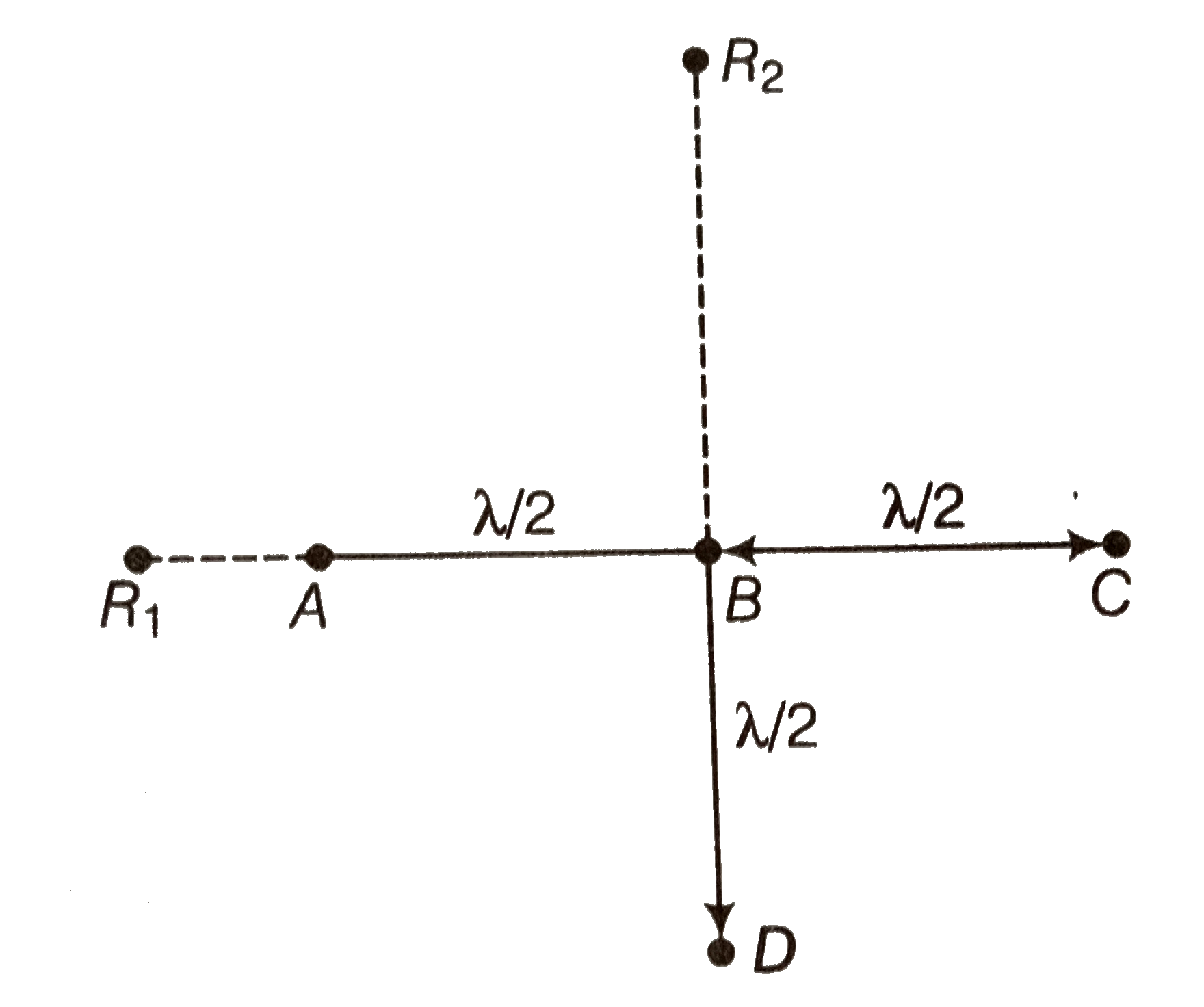
Consider the disturbances at the reciever R1 which is at a distance d from B.
Let the wave at R1 because of A be yA=acosωt . The path difference of the signal from A with that from B is λ/2 and hence, the phase difference is π.
Thus, the wave at R1 because of B is
yB=acos(ωt−π)=−acosωt.
The path difference of the signal from C with that from A is λ and hence the phase difference is 2π.
Thus, the wave at R1 because of C is yC=acos(ωt−2π)=acosωt
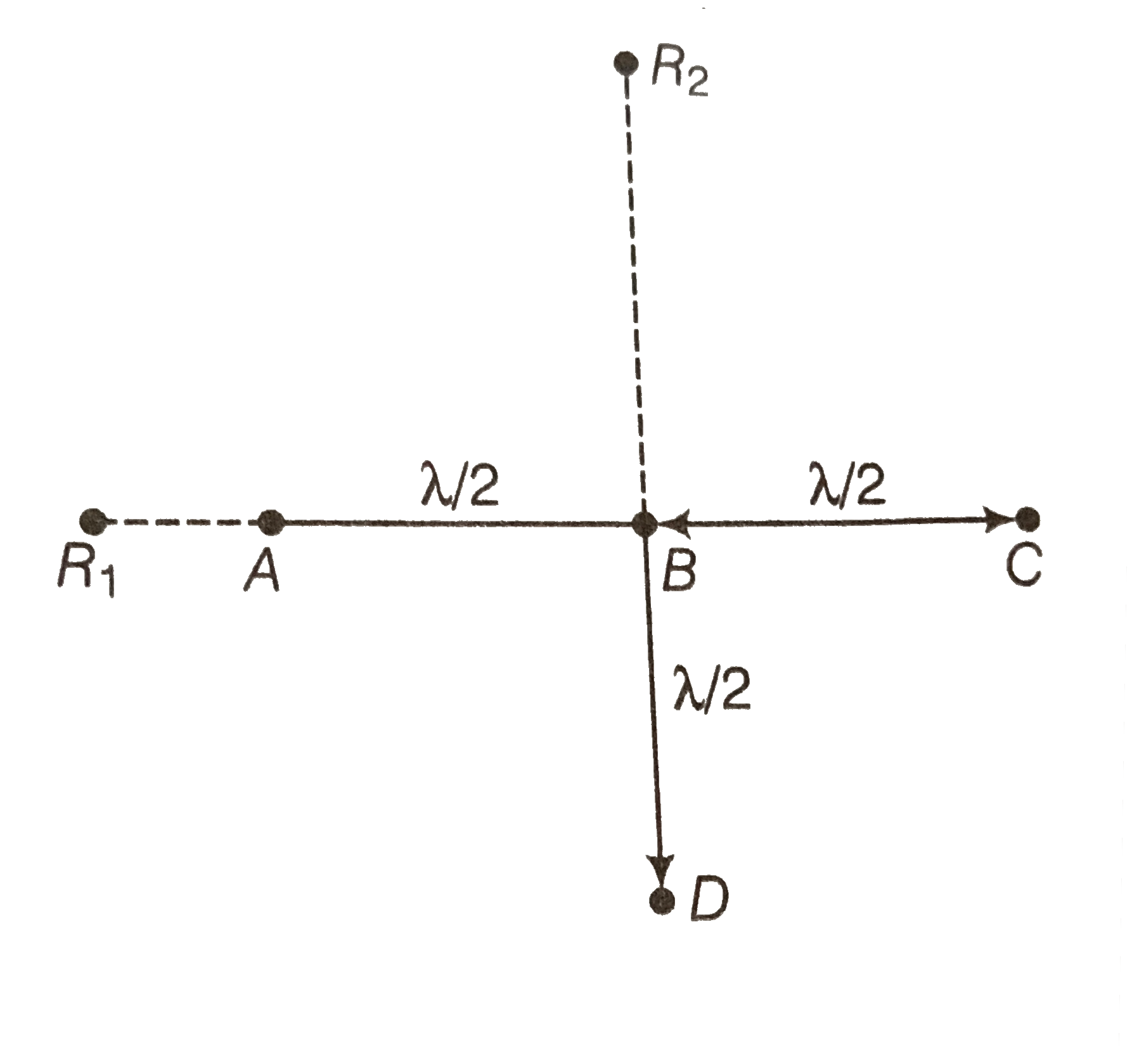
The path difference between the signal from D with that of A is
√d2+(λ22)−(d−λ/2)=d(1+λ4d2)1/2−d+λ2
=d(1+λ4d2)1/2−d+λ2≈λ2 (∴d>>λ)
Therefore,phase difference is π.
∴YD=acos(ωt−π)=−acosωt
Thus, the signal picked up at R1 from all the four sources is YR1=yA+yB+yC+yD
=acosωt−acosωt+acosωt−acosωt=0
(i) Let the signal picked up at R2 from B be yB=a1cosωt.
The path difference between signal at D and that at B is λ/2.
:yD=−a1cosωt
The path difference between signal at A and that at B is
√d2+(λ22)−d=d(1+λ24d2)1/2−d ˜–1λ28d2
As d>>λ, therefore this path difference →0
and phase difference =2πλ(18λ2d2)→0
Hence, yA=a1cos(ωt−ϕ)
Similarly, yC=a1cos(ωt−ϕ)
∴ Signal picked up by R2 is
yA+yB+yC+yD=y=2a1cos(ωt−ϕ)
∴|y|2=4a21cos2(ωt−ϕ)
∴<I>=2a21
Thus, R1 picks up the larger signal.
(ii) If B is switched off,
R1 picks up y=acosωt
∴⟨IR1⟩=12a2
R2 pick up y=acosωt
∴⟨IR2⟩=a2<cos2ωt>y=a22
(iii) Thus, R1 and R2 pick up the same signal
If D is switched off.
R1 pick up y=acosωt
∴⟨IR1⟩=12a2
R2 picks up y=acosωt
∴⟨IR2⟩=9a2<cos2ωt>y=9a22
Thus, R2 picks up larger signal compared to R1.
(iv) Thus, a signal at R1 indicates B has been switched off and an enhanced signal at R2 indicates D has been switched off.
Topper's Solved these Questions
Similar Questions
Knowledge Check
Four identical monochromatic source A, B, C, D as shown in figure produce waves of the same wavelength λ and are coherent. Two receivers R1 and R2 are at great but equal distance from B. The choose the correct statements.
 Athe reciver R2 picks up the larger singalBtwo receiver R! and R2 picks up singals of equal intensity when B is turned offCwhen source D is turned off R2 picksup larger singalDwhen source B is turned off the singal recevied by R1 changes
Athe reciver R2 picks up the larger singalBtwo receiver R! and R2 picks up singals of equal intensity when B is turned offCwhen source D is turned off R2 picksup larger singalDwhen source B is turned off the singal recevied by R1 changesIn question number 3, which of the two receivers picks up the larger signal when D is turned off?
AR1BR2CR1 and R2DNone of these.In question number 3, which of the two receivers picks up the larger signal when B is turned off?
AR1BR2CR1 and R2DNone of these.
Correct the given sentence.
None of the two guests turned up.
View SolutionWhich contents are lost when the computer turn off?
View SolutionTwo coherent point sources S1andS2 are separated by a small distance 'd' as shown. The fringes obtained on the screen will be :
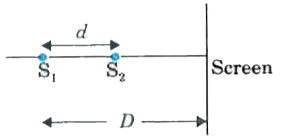
View SolutionTwo coherent point sources S1 and S2 are separated by a small distance d as shown. The fringes obtained on the screen will be
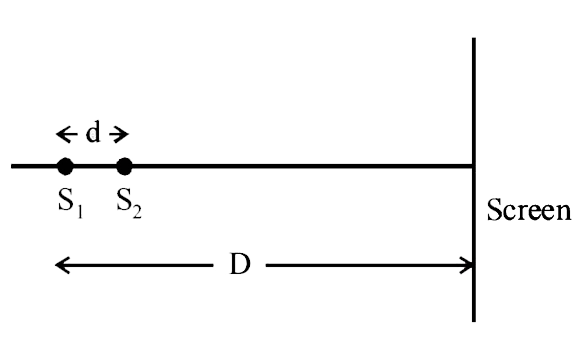
View SolutionFour identical coherent sourc e emiting monochromatic light if same wavelength lambda are placed at A,B,C and D as shown. Two receivers R1 and R2 are at but equal distance from B. The path difference between signals reaching from A&D at R1 is λ2 and between signals reaching from A & B at R2is≅0. Also assume that intensities of waves emitted by A,B,C &D reaching at R1 and R2 is same.
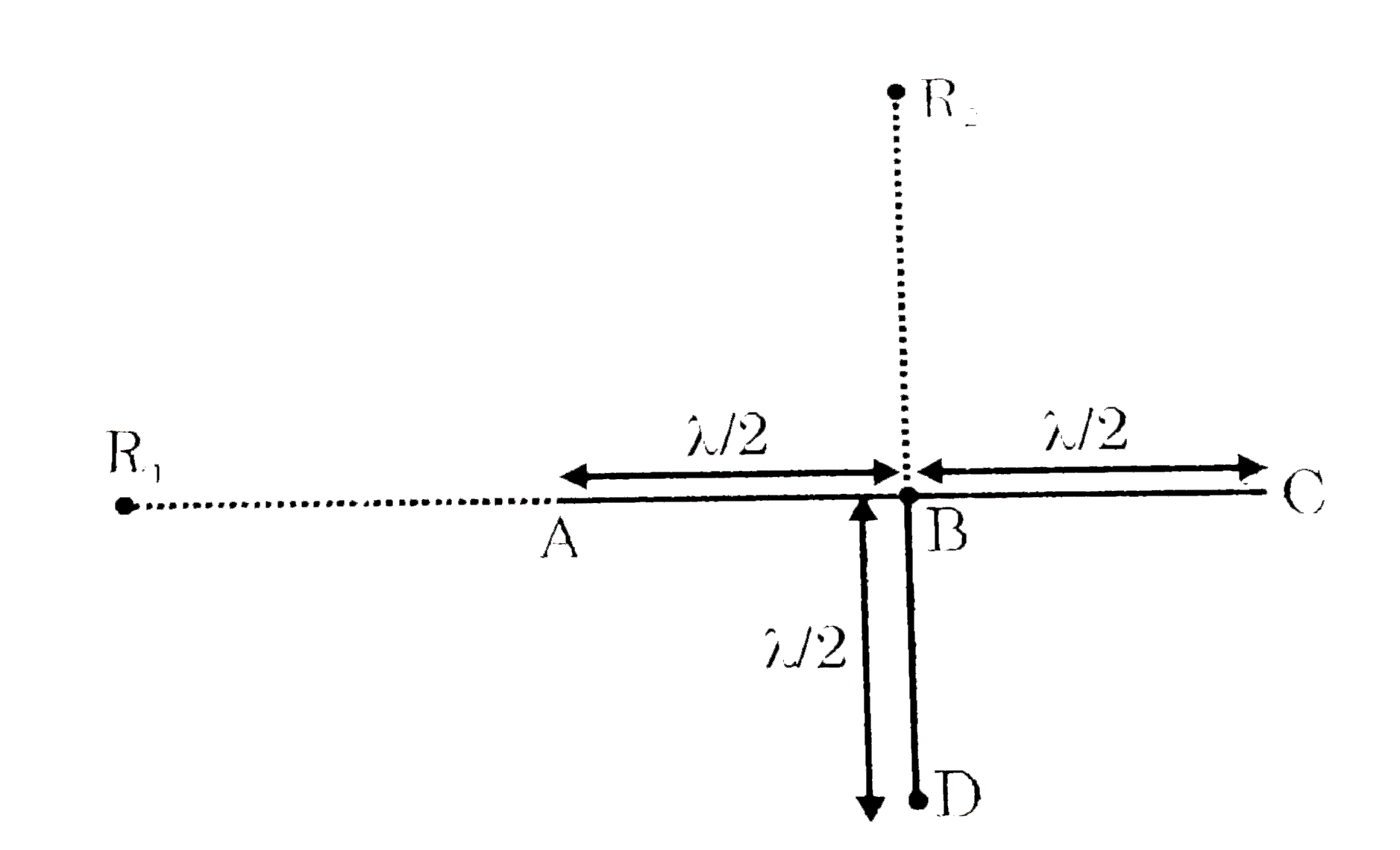
View Solution

